In pictures: NVIDIA Shield Android TV vs Xbox One vs PS4 vs Wii U
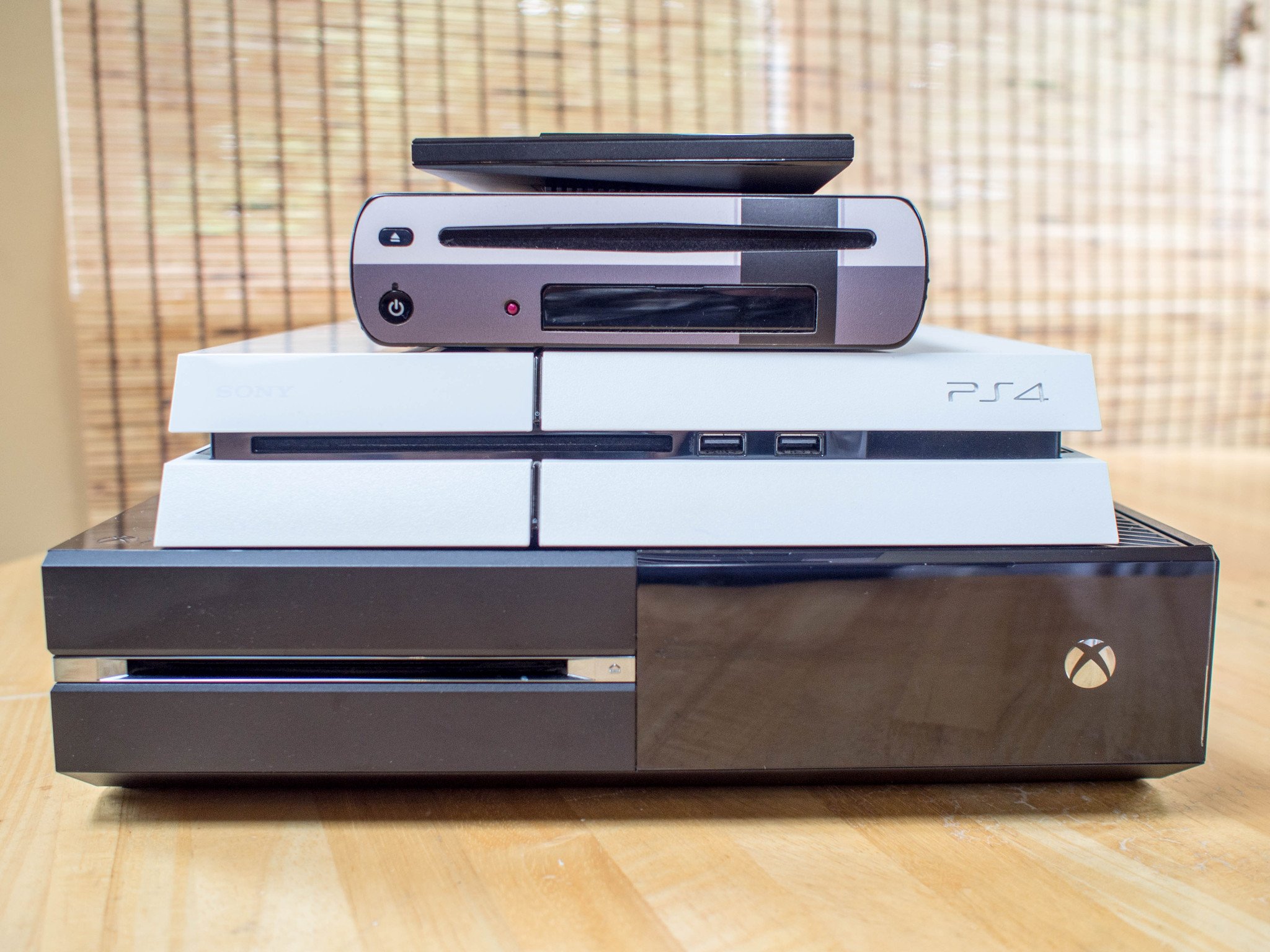
Nobody who should be listened to will tell you the NVIDIA Shield TV is capable of providing a gaming experience comparable to the Xbox One, PS4, or even the Wii U. The hardware and software in those consoles is finely tuned to provide things the Tegra X1 and Android TV simply aren't capable of delivering. Gaming on the Shield Android TV is fun, but the current lineup is mostly nostalgia and expanded mobile games. It's undoubtedly aimed at consoles, but not quite ready to take over yet.
That's not to say the gaming experience and many other features contained within the Shield Android TV aren't impressive, in fact it wouldn't be hard to call this the best set top box on the market today. By that mark alone, it's worth taking a look at what exactly you get from this box compared to the other consoles to help you better decide if there's room in your life for the Shield Android TV.
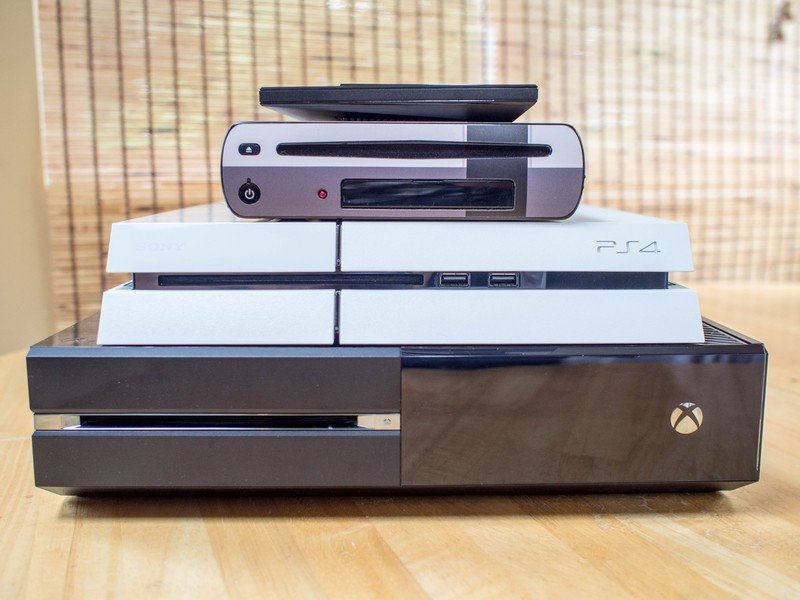
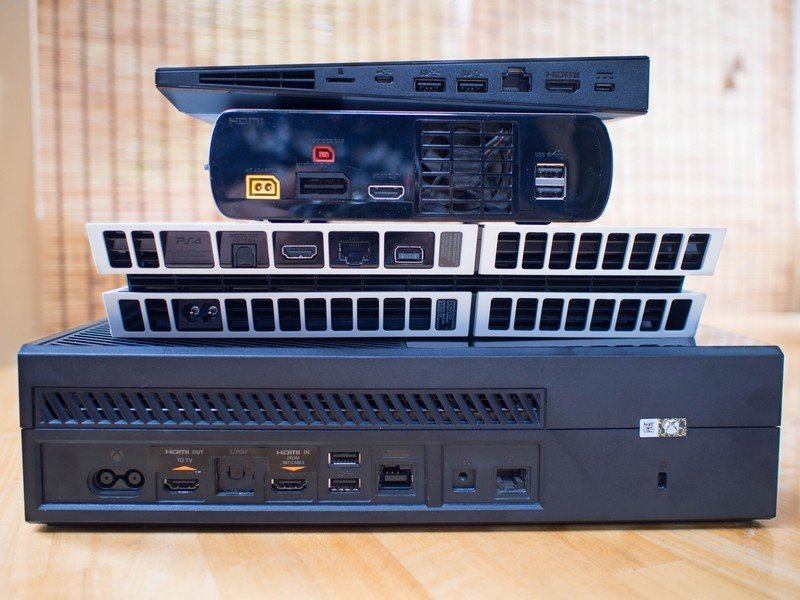
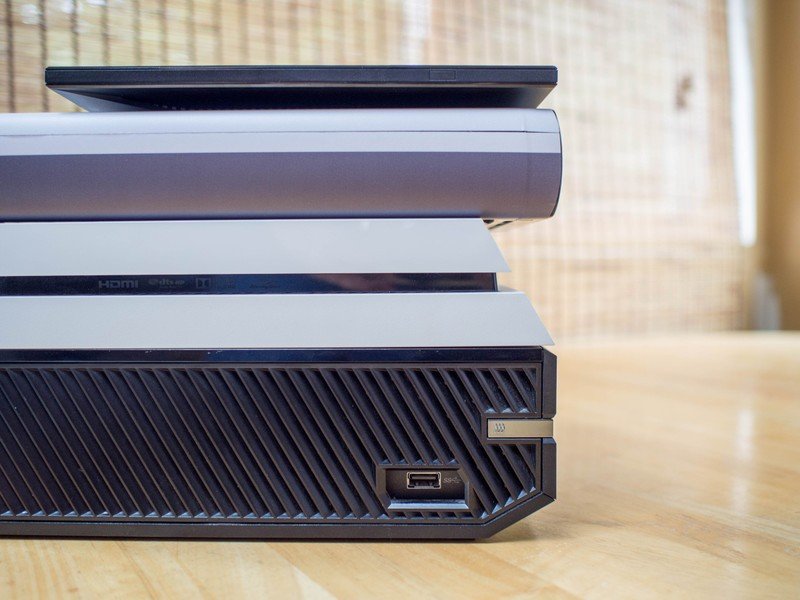
While the Shield Android TV is noticeably larger than streaming competitors like Roku, Apple TV, and even the Nexus Player, compared to the current crop of game consoles it's a little sliver of nothing. The lack of an optical drive and the wall wart power brick help considerably with the size, but it's also not doing as much as these other devices. Nintendo is powering two screens at once, while Sony and Microsoft equip their AMD processors with all the heatsinks and fans they can stuff into these gaming boxes to ensure optimal performance under load. The Tegra X1 in the Shield Android TV isn't that different from a mobile processor, which is why the overall profile is only slightly larger than the Shield Tablet.
This also means it takes up significantly less room on an entertainment center, especially if you pay for the aluminum stand. It can be easily hidden behind a television, or you can connect a hard drive and a web cam to it and use the Shield Android TV as an HTPC with video chat support through the Android TV leanback UI. Alternatively, if you have it displayed prominently, the instant-on power button and HDMI-CEC one-touch mode allows you to control supported televisions in the same way you would a PS4.
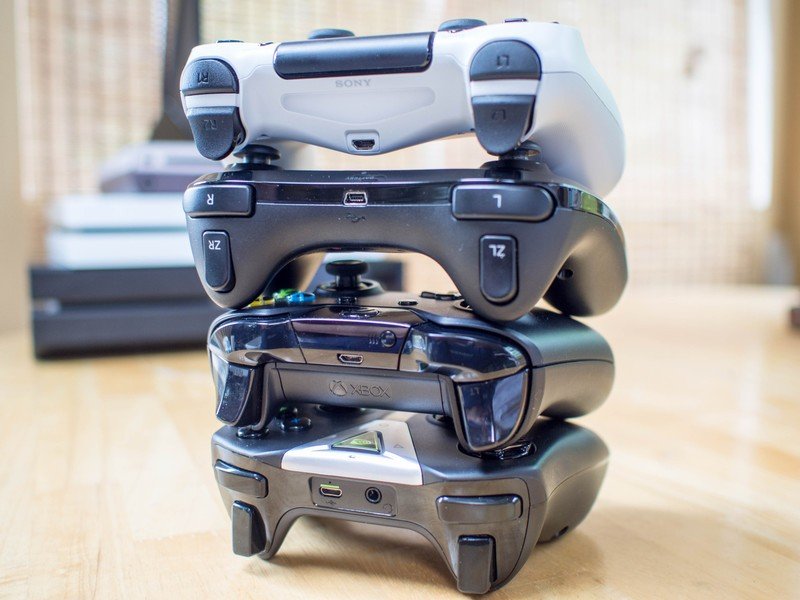
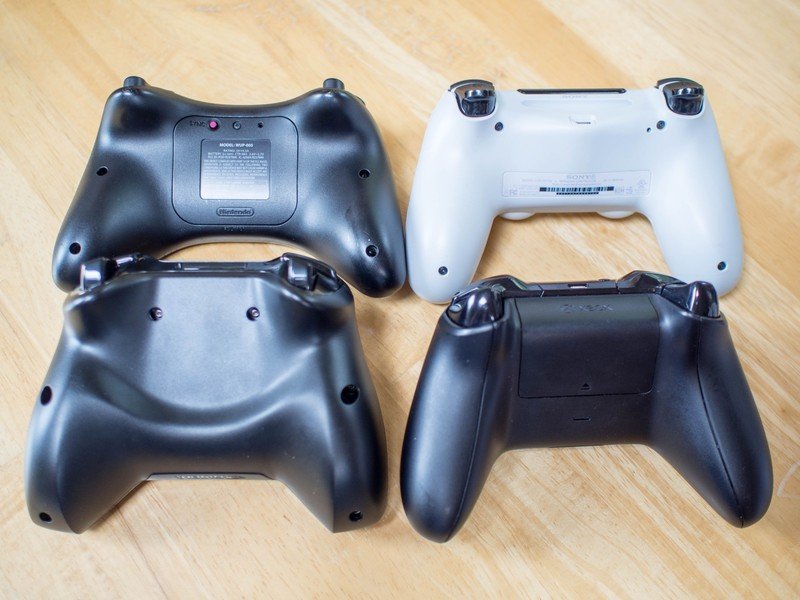
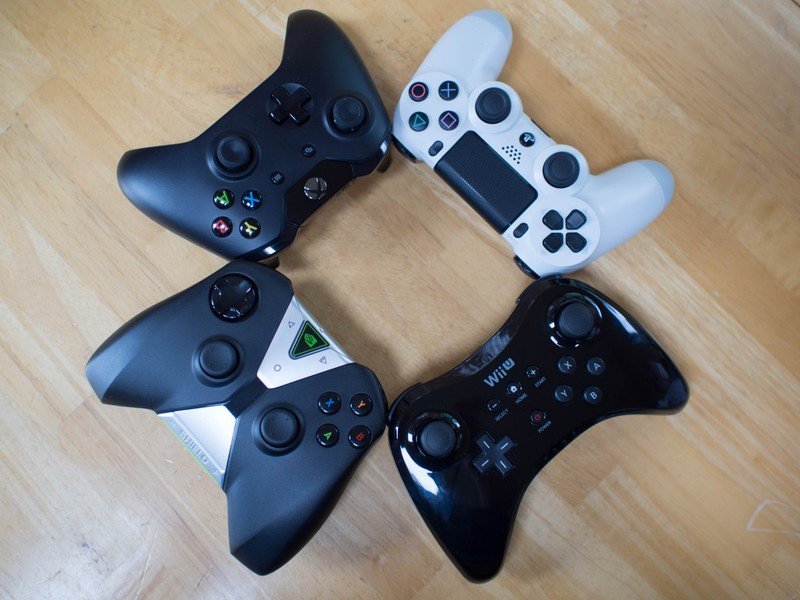
Another interesting place to look when comparing these systems is the controller. While Sony typically enjoys being the thinnest and lightest controller in the bunch, all of the console controllers manage to be lighter and thinner than what is included with the Shield Android TV. Nvidia makes up for the added bulk with features and a nice sloped design in the back that offers a place to rest your unused fingers, so it's not like you're getting the same experience as you would with the others.
The ability to slide in any pair of headphones and steal all of the audio from the TV or control the volume from your controller is nice, and the microphone baked in to the controller for "OK Google" commands is awesome, but the controller itself is still a little on the unwieldy side. There's also some odd symmetry issues, like the rightmost button seems to almost fall off of the controller the way it is positioned. It's miles ahead of anything you'll get from any other set-top box manufacturer, but clearly not quite as nice as what we see from the dedicated consoles.

While the Shield Android TV isn't going to be replacing the heavyweights anytime soon, if you're a casual gamer who isn't addicted to the current wave of games or you're looking for a nice streaming box for the non-gaming TV in your house, it's unlikely you'll find anything that suits your needs quite like NVIDIA's offering. And who knows, maybe NVIDIA's success with the Shield Android TV will have them aim just a little higher next time and offer something that directly competes with the likes of Sony, Microsoft, and Nintendo.
Get the latest news from Android Central, your trusted companion in the world of Android

